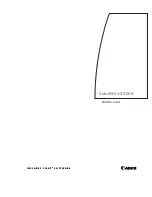Reviews:
No comments
Related manuals for A5QB

ColorPASS-Z5000
Brand: Canon Pages: 134

LUXOMAT net ViSTATION
Brand: B.E.G. Pages: 4

SUPERSERVER 5018D-FN8T
Brand: Supermicro Pages: 124

xPort Pro XPP1004000-02R
Brand: Lantronix Pages: 17

ProtectServer External 2
Brand: SafeNet Pages: 22

NAS U8-111
Brand: TerraMaster Pages: 13

SuperServer 6123L-8R
Brand: Supero Pages: 105

SuperServer 7089P-TR4T
Brand: Supermicro Pages: 155

2140
Brand: Moxa Technologies Pages: 100

SYSGuard 3001
Brand: EXAGATE Pages: 8

RS160-E4 PA4
Brand: Asus Pages: 186

Compaq AlphaServer DS10
Brand: HP Pages: 43

Cluster Platform Hardware Kits v2010
Brand: HP Pages: 12

CB900s i4
Brand: HP Pages: 12

hpe proliant dl20 gen9
Brand: HP Pages: 131

Cisco MDS 8/12c
Brand: HP Pages: 44

Cluster Platform
Brand: HP Pages: 74

Cisco MDS 8/24c
Brand: HP Pages: 44

















